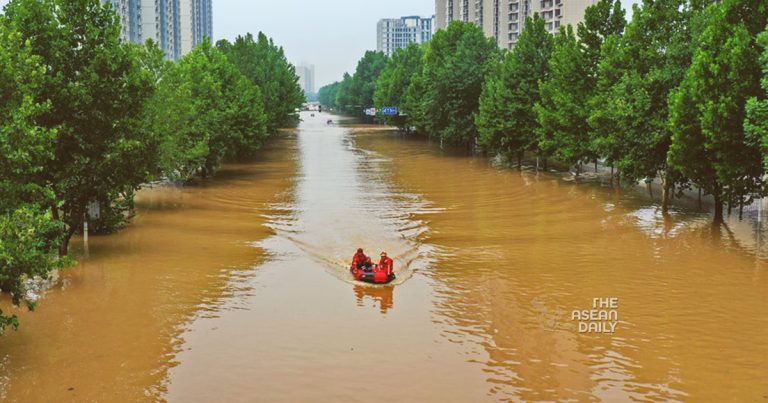6-8-2023 (BEIJING) Unprecedented rainfall and severe flooding have forced more than 1.5 million residents to evacuate their homes in China’s Hebei province, causing widespread destruction in the northern part of the country.
According to the state news agency Xinhua, around 960,000 of the relocated individuals are from flood control zones out of the total 1.54 million affected in Hebei, which shares a border with Beijing.
Hebei province has taken on the responsibility of safeguarding the capital by opening up flood control zones along waterways to divert the overwhelming deluge away from Beijing. As a result, residents residing in these zones have had to seek refuge in higher ground, as Hebei Communist Party leader Ni Yuefeng has committed the province to serving as a protective “moat” for the capital.
Formerly a typhoon, Doksuri made landfall over a week ago and has since unleashed record-breaking rainfall on Beijing and its surrounding areas, leading to extensive flooding.
While the flood situation in Hebei province has somewhat eased on Saturday, the remnants of the storm continue to impact the northeast region. Alarms have been raised regarding water levels in 25 rivers in Heilongjiang province, and the cities of Wuchang and Shangzhi have reported severe flooding, leaving residents stranded and causing damage to homes and bridges, as reported by Xinhua.
The Ministry of Emergency Management has dispatched a team to assess the situation in the affected province, while the People’s Liberation Army’s Northern Theatre Command has established a coordination center to oversee rescue operations.
In the neighboring Jilin province, specifically in the county-level city of Shulan, at least one fatality has been reported, with four individuals still missing. Among the missing is the executive vice mayor of the city, who was involved in directing flood containment efforts, according to a news portal affiliated with Chongqing Daily.
The neighboring province of Liaoning is also on high alert, as it falls under a weather warning covering a significant portion of the country.
The National Meteorological Centre has forecasted thunderstorms, strong winds, and hail in various regions, including Inner Mongolia, Qinghai, Gansu, Shaanxi, Shanxi, Hebei, Tianjin, Shandong, Henan, Anhui, Jiangsu, and Zhejiang, in the 24-hour period until 2 p.m. on Sunday.

However, Hebei remains the most severely affected area, with a death toll of at least 20 people. In the city of Baoding alone, 10 fatalities have been reported, with 18 individuals still missing as of Saturday noon.
Beijing, the capital city, has also faced significant repercussions from the torrential rainstorm, with at least 11 fatalities reported. The downpour transformed numerous roads into rivers, flooded Daxing International Airport, and disrupted transport links to some outlying regions.
Authorities have announced that communication has been restored to all suburban areas in the capital, but the risk of landslides remains high.
Overall, Doksuri is estimated to have caused direct economic losses of 14.7 billion yuan (approximately US$2 billion) since making landfall in Fujian province on July 28. The impact of the storm has affected around 2.91 million people in Fujian, Zhejiang, Anhui, Jiangxi, and Guangdong.
Additionally, authorities have reported that the direct economic losses from various natural disasters in the past month amounted to 41 billion yuan, with a total of 147 people either killed or missing due to these calamities.




